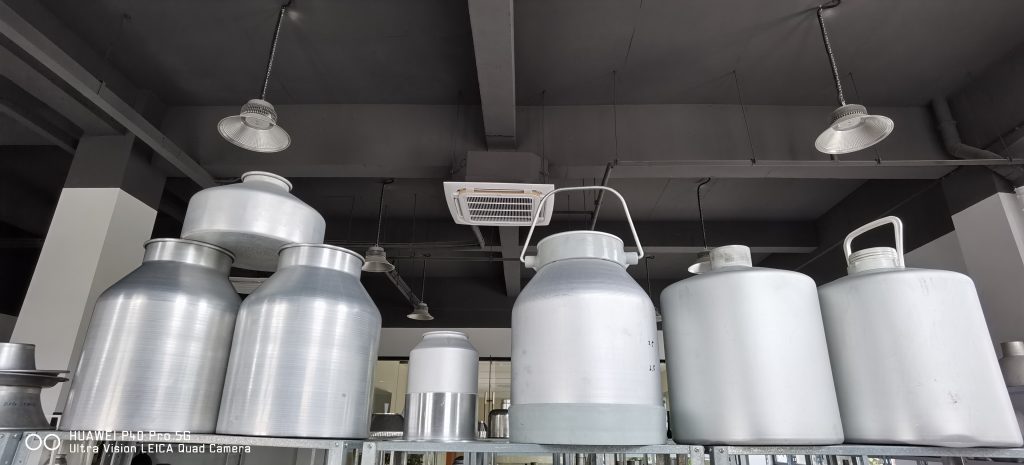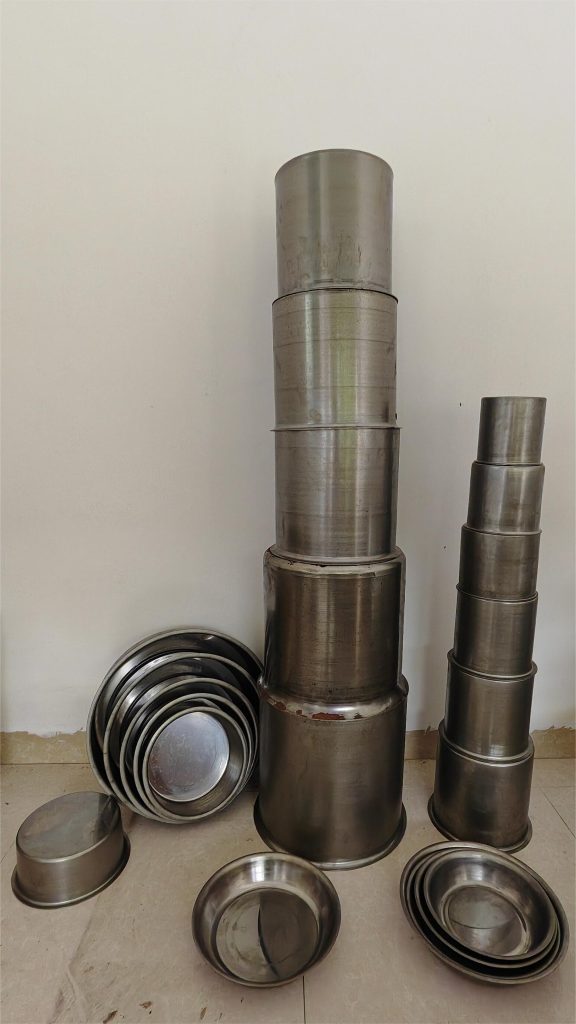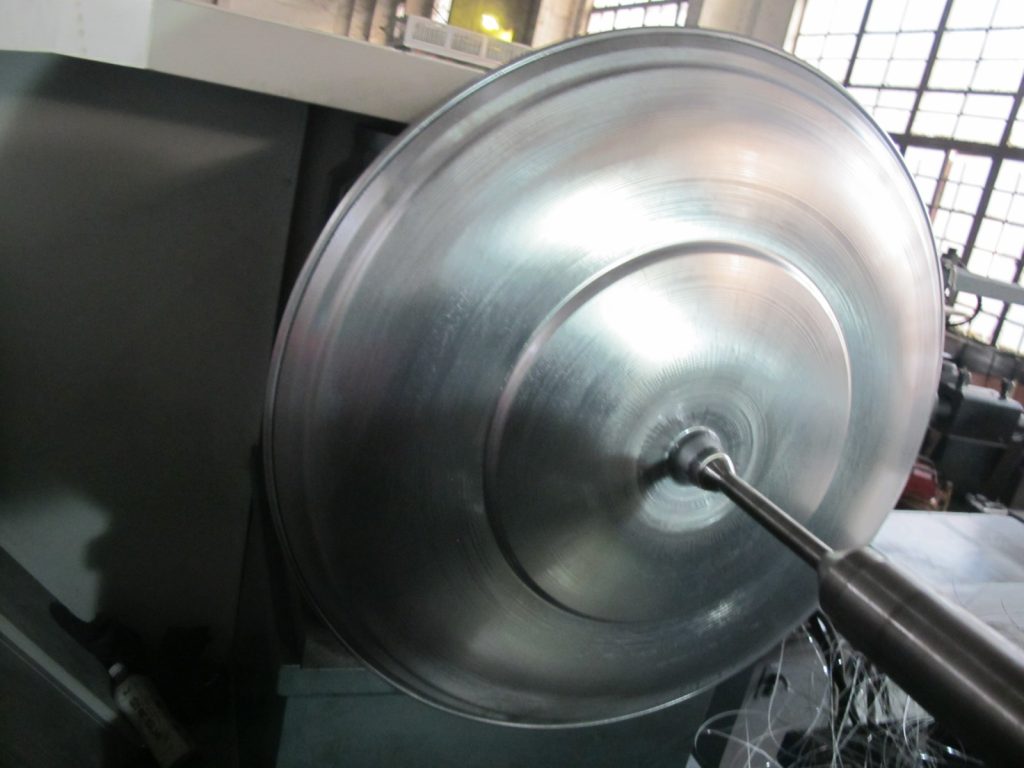
Precision Craftsmanship of Cookware Metal Spinning
Cookware metal spinning stands as the pinnacle of precision engineering, shaping raw metal into exquisite culinary vessels. This comprehensive exploration delves into its applications across various sectors, the diverse materials utilized, and the myriad advantages it offers in cookware production.
Deep drawing and spinning process structures in the production of cookware Milk cans
Aluminum milk can production case:

The aluminum milk jug is a testament to the precision and efficiency of modern cookware manufacturing. By using a combination of deep drawing and spinning processes, manufacturers can create durable and functional containers that meet the needs of dairy industry professionals around the world.
Deep drawn parts: (2 deep drawings)
The deep drawing process is the basis for the production of aluminum milk cans. It involves drawing a flat piece of aluminum into a cylindrical shape using dies and punches. Through a series of progressive forming steps, the sheet is deformed to obtain the required size and geometry of the milk tank.
Metal spinning part: (1 time thinning and high spinning, 1 spin necking)
Once the basic shape of the milk jug is formed by deep drawing, the spinning process adds intricate details and final touches. This stage includes installing the partially formed can on the CNC spinning machine, using a special spinning wheel tool and a set CNC program to thin and spin the deep-drawn barrel-shaped semi-finished product to the height of the barrel. Increase (this part avoids the limit of deep drawing. For example, the size and height of 40L is about 600. It is very difficult to pass the deep drawing process, but it is very easy to spin);
Step 2: Put the barrel into the clamp on the CNC spinning machine to complete the trimming, necking, rolling and other processes. You can even perform part of the polishing work manually during the final curling;
By rotating the cans on precision molds, manufacturers can achieve tight tolerances and smooth surfaces, ensuring a seamless finish.
Application Areas:
Commercial Cookware:
The demanding environment of commercial kitchens necessitates cookware of unparalleled durability and functionality. Metal spinning techniques meet these demands by crafting robust pots, pans, and utensils capable of withstanding the rigors of high-volume cooking, ensuring efficiency and reliability in professional settings.
Hotel Cookware:
In the realm of hospitality, cookware serves not only as a functional tool but also as a symbol of culinary excellence. Metal spinning enables the creation of sophisticated and durable cookware that meets the exacting standards of hotels and restaurants, enhancing both aesthetics and performance to elevate the dining experience.
Household Cookware:
At the heart of every home kitchen lies an array of essential cookware items. Metal spinning caters to the needs of households worldwide by producing a diverse range of pots, pans, and cooking utensils that marry durability with aesthetic appeal, empowering home chefs to create culinary delights with confidence.
Cookware Materials:
Stainless Steel:
Renowned for its strength, corrosion resistance, and hygienic properties, stainless steel reigns supreme in cookware manufacturing. Metal spinning techniques allow for the precise shaping of stainless steel sheets, resulting in cookware that not only withstands the test of time but also maintains its pristine appearance even after prolonged use.

Multi-layer Cladding Materials:
To enhance the performance of cookware, manufacturers often employ multi-layer cladding materials, such as stainless steel with aluminum or copper cores. Metal spinning facilitates the bonding of these layers, creating cookware with superior heat distribution and conductivity, ensuring optimal cooking results in both professional and home kitchens.

Iron:
Cast iron cookware has long been cherished for its exceptional heat retention and even cooking properties. Metal spinning enables the production of intricately designed iron cookware with smooth surfaces, offering chefs the perfect canvas for culinary creativity while ensuring consistent heat distribution for delectable dishes.
Aluminum:
Lightweight yet durable, aluminum cookware is prized for its excellent heat conduction properties. Through metal spinning, aluminum sheets are expertly formed into cookware shapes with precision, resulting in utensils that heat up quickly and distribute heat evenly, allowing for precise control over cooking temperatures and optimal culinary outcomes.


Advantages of Metal Spinning Cookware Products:
Short Development Cycle:
Metal spinning offers a streamlined development process, allowing for rapid prototyping and product iteration. By eliminating the need for complex molds, manufacturers can swiftly bring new cookware designs to market, reducing time-to-market and enabling quicker responses to consumer demands and trends.
Low Mold Cost, Suitable for Small to Medium Batch Production:
Unlike traditional manufacturing methods that rely on costly molds, metal spinning requires minimal tooling investment, making it economically viable for small to medium batch production runs. This cost-effectiveness allows for greater flexibility in production planning and facilitates the production of bespoke cookware tailored to niche markets and specific customer requirements.
Breakthroughs in Efficiency and Production with CNC Spinning and
Deep Drawing Technology Integration:
By combining CNC spinning and deep drawing technology, manufacturers can achieve unprecedented levels of efficiency and production scalability in cookware manufacturing. While traditional deep drawing processes necessitate frequent mold changes and complex tooling setups, CNC spinning offers a comprehensive solution that integrates multiple forming functions into a single operation, including trimming, curling, turning, reverse edging, and spinning forming. This holistic approach not only minimizes production downtime but also enhances process control and repeatability, paving the way for continuous improvements in productivity and product quality.
Overcoming Process Limitations with CNC Metal Spinning:
Complex forming processes, such as necking and shaping slender workpieces, pose significant challenges in traditional manufacturing methods. However, CNC metal spinning excels in addressing these challenges by leveraging advanced automation and precision control capabilities. By harnessing the versatility of CNC technology, manufacturers can achieve precise and intricate geometries with ease, unlocking new possibilities in cookware design and functionality.
Conclusion:
Altron cookware metal spinning represents the epitome of precision engineering and craftsmanship, offering a versatile and efficient solution for producing high-quality culinary vessels. From commercial kitchens to household settings, the application of metal spinning techniques spans across diverse sectors, catering to the unique needs of professional chefs and home cooks alike. With ongoing advancements in materials, technology, and process optimization, the future of cookware metal spinning holds limitless possibilities, promising continued innovation and excellence in the culinary world.
ALTRON‘s Metal Spinnning Froming Services:
WhatsApp: +86 156 2739 7226
E-mail: info@auto-altron.com

Metal spinning machine capabilities

Robot Welding

3D laser cutting product gallery

Hydraulic Deep Draw Forming
